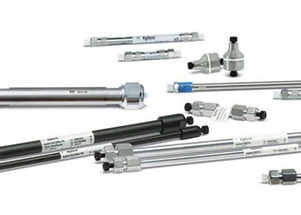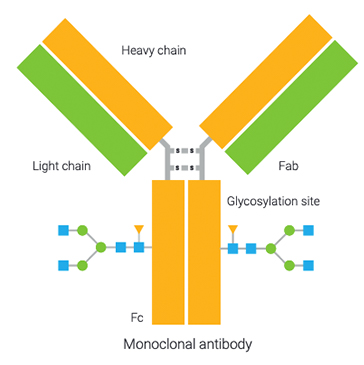Posted by Chrom Tech on 15th Oct 2025
What Column Should I Use for Proteomics?
Proteomics—the large-scale study of proteins—is a cornerstone of modern biological and pharmaceutical research. Understanding protein composition, structure, and interactions provides key insights into disease mechanisms, drug targets, and biomarker discovery. When performing LC-MS (liquid chromatography–mass spectrometry) for proteomics, one of the most common questions researchers face is: “What LC column should I use?” The answer depends on several factors, including protein size, experimental goals, and chromatographic mode. Below, we break down the most important considerations for choosing the right column.
“A difficult question that researchers often get hung up on is: ‘What LC column should I use?’”
Chromatography Modes for Proteomics
In proteomics workflows, three primary chromatographic modes are commonly used—size exclusion (SEC), ion exchange (IEX), and reverse phase (RP). Each serves a specific role depending on the nature of the sample and analytical goal:
- Size Exclusion Chromatography (SEC): Separates proteins based on molecular size and is often used for intact protein analysis or desalting prior to MS.
- Ion Exchange Chromatography (IEX): Separates proteins by charge and is ideal for protein fractionation or purification steps.
- Reverse Phase Chromatography (RP): The most common mode for peptide digests in LC-MS. It provides strong separation based on hydrophobicity and is compatible with most mass spectrometers.
For reversed-phase proteomics, C18 and C8 columns are best suited for peptides, while C3 and C4 columns work well for larger proteins and intact mass analysis. When working with large proteins or protein complexes, consider a Poroshell 300 Å column to accommodate larger molecular structures without diffusion limitations.
Superficially Porous vs. Fully Porous Particles
Column packing material is another critical variable in proteomics separations. Superficially porous particles (SPPs), also known as core-shell particles, feature a solid core with a porous outer layer. This structure provides several advantages:
- Lower backpressure compared to fully porous particles of similar size
- Improved mass transfer and faster run times
- Comparable efficiency to sub-2 µm fully porous particles at lower system pressure
For example, a 3 µm superficially porous column can provide resolution similar to a sub-2 µm fully porous column while reducing system strain. For more details on how particle design affects performance, see our related blog: Pore Size vs. Particle Size in HPLC Columns.
Choosing Column Dimensions
Column length and internal diameter significantly impact resolution, run time, and pressure. In general:
- Longer columns provide greater peptide separation and overall protein coverage but increase backpressure and analysis time.
- Shorter columns reduce run time and solvent consumption, ideal for targeted LC-MS or MRM (multiple reaction monitoring) quantitation when specific peptides are already known.
For exploratory or “shotgun” proteomics workflows, longer columns improve identification depth. For targeted analyses, shorter columns offer speed and efficiency without compromising data quality.
“Guessing at which column to use is a recipe for disaster. When armed with the proper column, results are faster, more accurate, and more reliable.”
Conclusion
Choosing the right LC column for proteomics depends on the sample type, desired resolution, and analytical goal. Begin by considering the stationary phase chemistry (C18, C8, C3, or C4), pore size (typically 300 Å for large proteins), and particle technology (superficially vs. fully porous). Matching these parameters to your method ensures optimal performance, reproducibility, and sensitivity in LC-MS workflows.
Chrom Tech offers a complete selection of HPLC and LC-MS columns designed for proteomics applications, including Agilent Poroshell 300 Å and InfinityLab series columns. Contact our technical team at support@chromtech.com for expert guidance in selecting the best column for your workflow.
Frequently Asked Questions About Proteomics Columns
Which column type is best for peptide digests?
For peptide digests analyzed by LC-MS, C18 or C8 reversed-phase columns are recommended. These stationary phases provide strong retention and separation of hydrophobic peptide fragments.
When should I use a 300 Å pore size column?
A 300 Å pore size is ideal for large proteins and intact mass analysis because it prevents restricted diffusion and maintains peak shape for high-molecular-weight analytes.
What’s the advantage of superficially porous particles?
Superficially porous (core-shell) columns offer faster separations and lower backpressure than fully porous columns, allowing high resolution even on standard HPLC systems.


